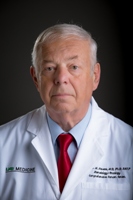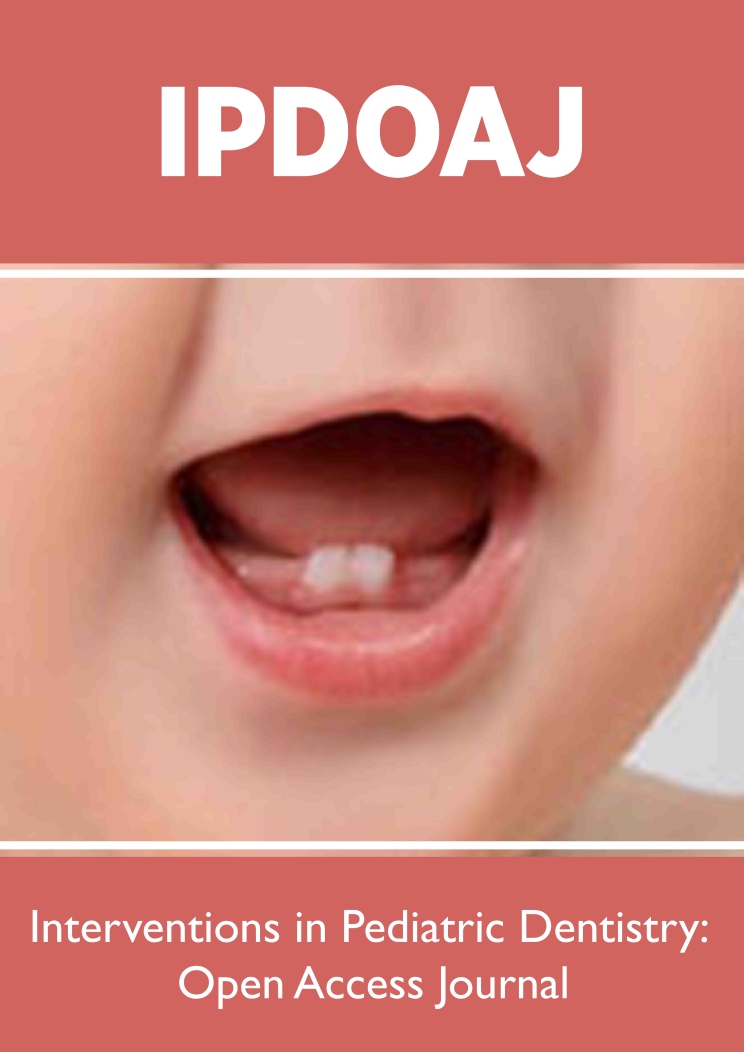
Lupine Publishers Group
Lupine Publishers
Menu
ISSN: 2637-6636
Mini Review(ISSN: 2637-6636) 
Epstein Pearls in Newborn Volume 7 - Issue 3
Karimi M DMD, BS*
- Department of Pediatric Dentistry, Sepideh Dental Clinic, Iran
Received: March 30, 2022; Published: April 06, 2022
*Corresponding author: Karimi M, Department of Pediatric Dentistry, Sepideh Dental Clinic, Iran
DOI: 10.32474/IPDOAJ.2022.07.000266
Abstract
Epstein pearls are small; harmless those appear in the baby’s mouth during the first weeks and months of development. It is also known as a gingival cyst a type of cyst of the jaws that originates from the dental lamina. Some researchers recently prefer to use Palatal cysts of the newborn instead of Epstein’s pearls. These bumps contain Creatine, a protein found naturally in human skin, hair, and nails. Epstein’s pearls disappear spontaneously within a few weeks of the baby’s birth and there is nothing to worry about.
Keywords: Epstein pearls; gingival cyst; harmless cyst of jaws; dental lamina; creatine; palatal cyst
Introduction
In 1880, Alois Epstein discovered Epstein’s pearls [1]. They are palatal cysts that are seen in the median palatal raphe at the junction of the hard and soft palate which are caused by entrapped epithelium during palatal fusion [2]. They are smooth, whitish, keratin-filled 1-4 mm papules. Their incidence is 7.3/1000 liveborn male newborn babies [3]. Epstein’s pearls resolve in the first 3 months hence treatment is not needed [4,5]. In 1886, Heinrich Bohn described another type of cyst. Alfred Fromm indicated the classification of gingival cysts in 1967[6]. Based on his opinion, gingival cysts of newborns can be classified into Epstein’s pearls, Bohn’s nodules, and dental lamina cysts [7]. When they appear on the gingiva or dental ridges, they are classified as “Bohn’s nodules” or “newborn’s gingival cyst” [1,2].
Epidemiology
Epstein pearls are observed in nearly 60% to 85% of newborn infants. Japanese newborns are most commonly affected (up to 92%), followed by whites and African-Americans [8]. Two other studies reveal Epstein pearls are observed in approximately 80% of newborn infants and are more common in Caucasian infants [9, 10]. In one study, Epstein pearls were more prevalent in infants born to multigravida mothers [9]. Higher birth weight and longer gestation were found to be independent risk factors [9]. One study found that Epstein’s pearls were less frequent in post-term babies in comparison with preterm and term ones. A greater rate seen in term babies was reported [11]. A study of oral neonatal lesions in newborns shows that the prevalence in Iran was lower than in other countries. This statistical difference in Iran with other countries may be related to factors such as race, geographical location, and nutrition [12]. Results showed that 52.6% of newborns (316 cases) had oral lesions, in which 41.5% cases with Epstein’s pearls, 22.3% cases with Bohn nodule. The most frequent oral lesion observed was Epstein’s pearls [12]. Rivers and his colleagues showed that the newborn in their study had Epstein’s pearls (56.0%) [13].
Differential Diagnosis
After the appearance of the lesion in the oral cavity, it is important to look for a differential diagnosis. The right diagnosis will help the pediatric dentist to reach the evaluation of the condition and manage the patient. Some of the differential diagnoses for Epstein pearls include:
a) Bohn nodules
b) Dental lamina cysts
c) Natal and Neonatal teeth
d) Congenital epulis
e) Congenital ranula
f) lveolar lymphangioma
Treatment & management
Epstein pearls don’t require any kind of treatment. In many cases, they will disappear within a week or two of birth. The friction in the mouth from breastfeeding, bottle feeding, or using a pacifier could help to break down and eliminate the bump.
Conclusion
Epstein’s pearls appear in the newborn mouth during the first weeks and months of development. They are typically seen on the roof of the mouth and are filled with keratin. They are generally asymptomatic and do not cause discomfort, and they normally degenerate and disappear into the oral cavity within 2 weeks to 3 months after birth.
References
- Singh RK, Kumar R, Pandey RK, Singh K (2012) Dental lamina cysts in a newborn infant. BMJ Case Reports.
- Moda Aman, Das Usha Mohan (2011) Gingival Cyst of Newborn. International Journal of Clinical Pediatric Dentistry 4(1): 83-84.
- Faridi MM, Adhami S (1989) Prepucial Epstein pearls. Indian J Pediatr 56: 653-655.
- Hayes PA (2000) Hamartomas, eruption cyst, natal tooth and Epstein pearls in a newborn. ASDC J Dent Child 67: 365-368.
- Flaitz CM (2013) Differential diagnosis of oral lesions and developmental anomalies. Casamassimo PS, Fields HW, McTigue DJ, Nowak A (Eds.), Pediatric Dentistry: Infancy through adolescence, 5th ed, Elsevier Saunders, St Louis, USA.
- Fromm A (1967) Epstein's pearls, Bohn's nodules and inclusion-cysts of the oral cavity. Journal of Dentistry for Children 34 (4): 275-287.
- Lewis, D.M. (2010) Bohn's nodules, Epstein's pearls, and gingival cysts of the newborn: a new etiology and classification. Journal - Oklahoma Dental Association 101(3): 32-33.
- Hayes PA (2000) Hamartomas, eruption cyst, natal tooth and Epstein pearls in a newborn, ASDC J Dent Child 67(5): 365-368.
- Gupta P, Faridi MMA, Batra M (2011) Physiological skin manifestations in twins: association with maternal and neonatal factors. Pediatr Dermatol 28(4): 387-392.
- Richard BM, Qiu CX, Ferguson MWJ (2000) Neonatal palatal cysts and their morphology in cleft lip and palate. Br J Plast Surg 53(7): 555-558.
- Moosavi Z, Hosseini T (2006) One-year survey of cutaneous lesions in 1000 consecutive Iranian newborns. Pediatr Dermatol 23(1): 61-63.
- Ajami B (2005) Frequency of oral lesions in newborns at Mashhad Imam Reza Hospital, in 2001(Article in Persian, abstract in English) Journal of Dentistry, Mashhad University of Medical Sciences 29: 91-96.
- Rivers JK (1990) Prevalence survey of dermatoses in the Australian neonate. JADA 23(1): 77-81.
Editorial Manager:
Email:
pediatricdentistry@lupinepublishers.com

Top Editors
-

Mark E Smith
Bio chemistry
University of Texas Medical Branch, USA -

Lawrence A Presley
Department of Criminal Justice
Liberty University, USA -

Thomas W Miller
Department of Psychiatry
University of Kentucky, USA -

Gjumrakch Aliev
Department of Medicine
Gally International Biomedical Research & Consulting LLC, USA -

Christopher Bryant
Department of Urbanisation and Agricultural
Montreal university, USA -

Robert William Frare
Oral & Maxillofacial Pathology
New York University, USA -

Rudolph Modesto Navari
Gastroenterology and Hepatology
University of Alabama, UK -

Andrew Hague
Department of Medicine
Universities of Bradford, UK -

George Gregory Buttigieg
Maltese College of Obstetrics and Gynaecology, Europe -

Chen-Hsiung Yeh
Oncology
Circulogene Theranostics, England -
.png)
Emilio Bucio-Carrillo
Radiation Chemistry
National University of Mexico, USA -
.jpg)
Casey J Grenier
Analytical Chemistry
Wentworth Institute of Technology, USA -
Hany Atalah
Minimally Invasive Surgery
Mercer University school of Medicine, USA -

Abu-Hussein Muhamad
Pediatric Dentistry
University of Athens , Greece

The annual scholar awards from Lupine Publishers honor a selected number Read More...




